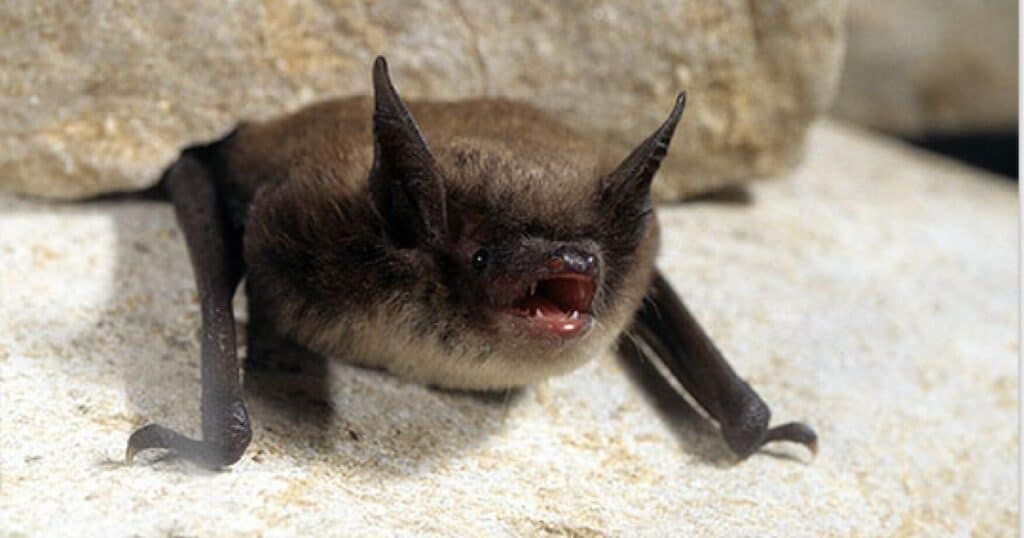As Kentucky warms into the summer season, a variety of critters and wildlife will be coming out more and more to enjoy the wonders of the outside world. But for local bat populations, some of the trees they would normally roost in were shredded by December tornadoes.
Bats in Kentucky usually hibernate from October to March. That means they hibernated right through the December tornado outbreak, which tore through the western and central Kentucky.
Kentucky Department of Fish and Wildlife Resources Nongame Program Coordinator Zack Couch said the state has about 15 different species of bats. Those species can be sorted into three different categories based on what kind of habitat they use. Some roost in the trees and forest year-round, some roost in caves and rock structures year-around and others alternate between caves in the winter and trees in the summer.

“Of the 15 species that I referred to earlier, probably eight to 10 of those species would reside in just [the] general west Kentucky area,” Couch said.
The most likely types of bats to be in western Kentucky are the ones that spend most of their time in the trees or spend their summers in trees. Couch said examples include the red bat, the hoary bat, the Seminole bat, the tricolored bat, the little brown bat and the Indiana bat. Most of them would have been in a hibernacula — a place where creatures go to hibernate — through the storm and didn’t immediately have to deal with the impact of the tornado outbreak.
For the trees that are still left standing, but may be dead or dying, the bark can loosen up, and some bats will roost there. For the trees left laying on the ground, those may not make a suitable roost for some bats, limiting where they might be able to rest in some areas.
“Kentucky is fortunate to have a lot of its area that’s forested right now,” Couch said. “There’s a lot of potential roost trees out there on the landscape. What would end up happening, and what I would imagine has happened in west Kentucky, is that while these bats are in hibernacula, the tornadoes come through. As they emerge from their hibernacula to start moving into the maternity sites around March or April, we’ll see that there’s this massive impact on the landscape that the tornado has caused. They will essentially take up residence elsewhere.”
Elsewhere could be nearby forest or woods that were relatively untouched by the tornadoes. Couch said bats really like trees with exfoliating bark, or barks that naturally peel away from the trees. Those kinds of trees include shagbark hickory trees or dead ash trees. Some bats aren’t even that picky about what kinds of trees they’ll roost in, he said, and pick any tree with branches.
“It really just depends. Each of these species have a little bit of nuance in what they like and what they don’t like as far as a roost site goes,” Couch said. “That’s why a forest that has a diversity of tree species and ages is often the best forest that you can have for a variety of bats.”
Ultimately, there doesn’t need to be a ton of trees or space for bats to roost in an area.
Couch said there are a few things to know if you see unexpected bats near or in your home. First, if there’s a bat foraging near your home, that’s a good thing because they’re eating things like mosquitoes and pests that damage crops. Second, if you see a bat in your home, don’t touch them or let your children or pets touch them. While it’s rare, bats can carry rabies.
“If you are interested in providing some additional bat habitat since there has been impact to a lot of trees in that area, you can always put up a bat box or a bat house,” Couch said. “There’s a variety of different plans and designs and some that you can buy online.”
Couch specifically suggested purchasing or building a “rocket box” and putting the box at least 12 feet in the air and in full sun.
Lily Burris is a features reporter for WKMS. She has a bachelor's degree in journalism from Western Kentucky University. She has written for the College Heights Herald at WKU, interned with Louisville Public Media, served as a tornado recovery reporter with WKMS and most recently worked as a journalist with the Kentucky Center for Investigative Reporting. In her free time, she enjoys reading, crocheting and baking.





